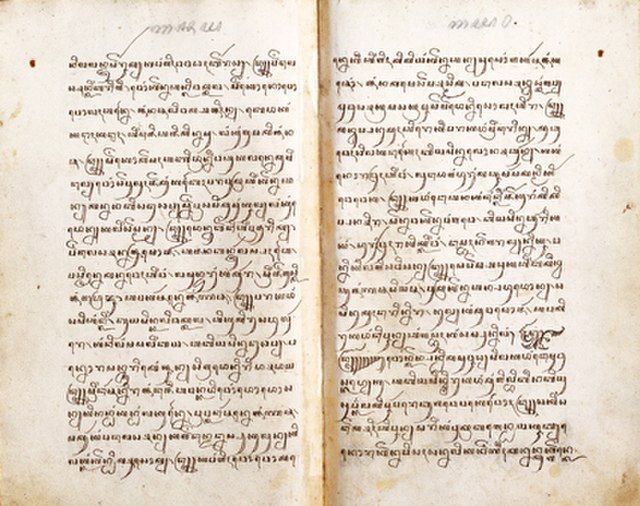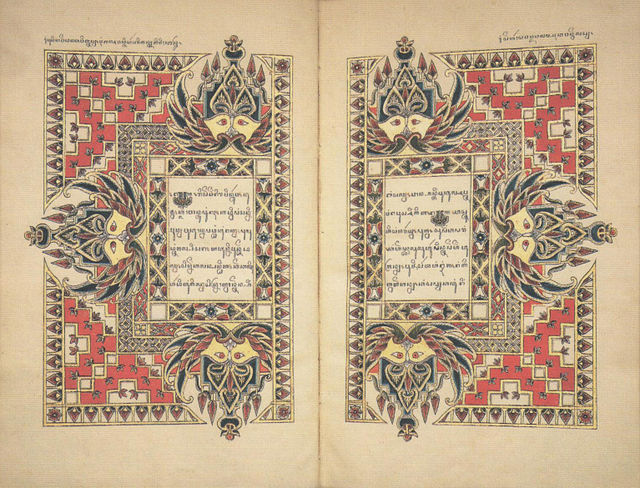Iteration marks are characters or punctuation marks that represent a duplicated character or word.
Bronzeware script, c. 825 BC
A variety of iteration marks in use in the classical text Tsurezuregusa (徒然草) 「世に語り傳ふる事–げにげにしく所々うちおぼめき–また疑ひ嘲るべからず」 (73rd passage)
The Javanese script is one of Indonesia's traditional scripts developed on the island of Java. The script is primarily used to write the Javanese language, but in the course of its development has also been used to write several other regional languages such as Sundanese, Madurese, and Sasak; the lingua franca of the region, Malay; as well as the historical languages Kawi and Sanskrit. Javanese script was actively used by the Javanese people for writing day-to-day and literary texts from at least the mid-15th century CE until the mid-20th century CE, before its function was gradually supplanted by the Latin alphabet. Today the script is taught in DI Yogyakarta, Central Java, and the East Java Province as part of the local curriculum, but with very limited function in everyday use.
Serat Yusuf in palm leaf (lontar) form, Tropenmuseum collection
Serat Yusuf in paper codex form, Museum Sonobudoyo collection
Opening pages of Serat Jatipustaka copied in 1830, Denver Museum collection
Opening page of Babad Tanah Jawi copied in 1862, Library of Congress collection






